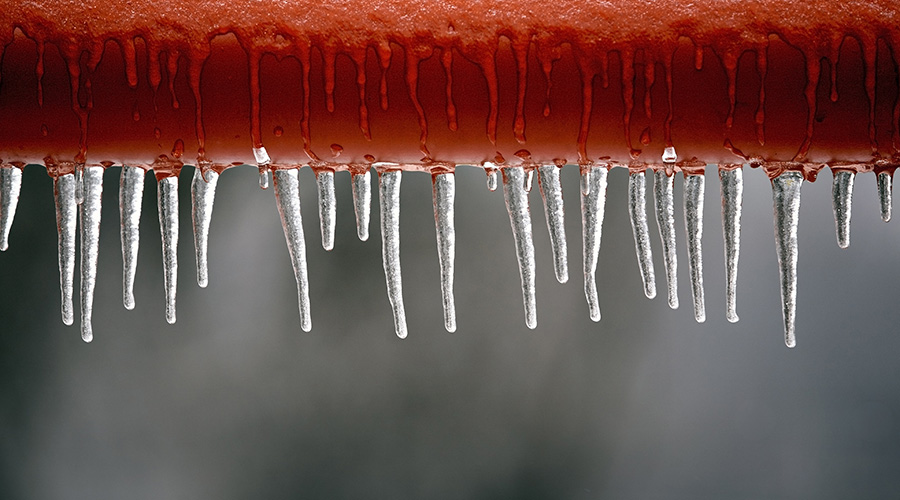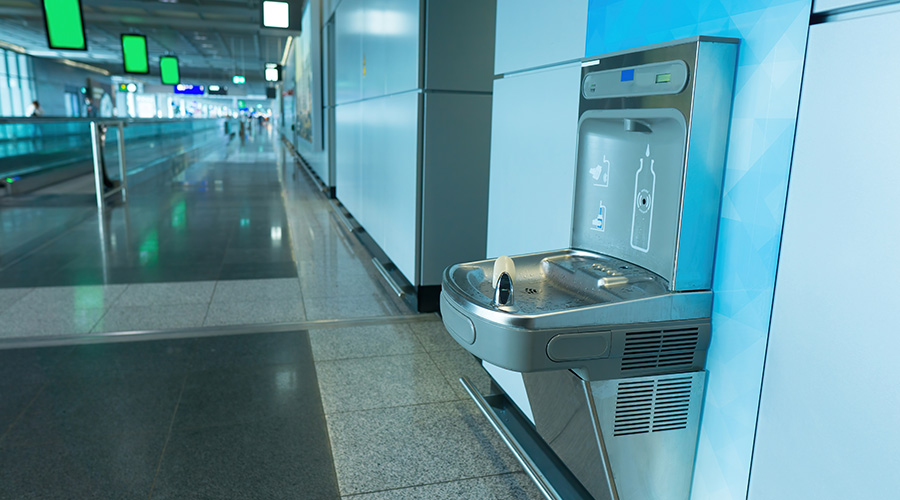Making Waterless Work
The University of Southern Maine's investigation and installation of waterless urinals reveals both benefits and challenges
The 30-plus buildings on the three campuses of the University of South Maine contain about 2 million square feet. In the view of many maintenance and engineering managers, such buildings also contain a large number of cost-saving opportunities — urinals. Increasingly, these building components represent a chance for managers to maximize investments in facility investments while paying attention to the bottom line.
But managers and their organizations must specify products and equipment that also deliver both efficiency and long performance life.
“We’re trying to build 100-year buildings, but we only have so much money,” says John Rasmussen, building construction engineer with the university’s facilities management department. Over the last four years, the university has specified, installed and maintained a growing number of waterless urinals in its facilities in an effort to address evolving issues related to costs and environmental friendliness.
Faced with similar challenges, institutional and commercial organizations nationwide have explored the benefits and drawbacks of waterless urinals. The university’s experiences offer insights into the decision process, as well as assessing the post-installation performance.
Challenges and a Solution
The driving forces behind the university’s investigation of waterless urinals mirror those that have prompted interest among other facilities — primarily, concerns over the rising costs of water and sewer utilities, and second, the awareness of all facilities’ impact on the environment.
Once restricted largely to the Western United States, concerns over heavier demand on clean water sources now have reached all parts of the country. Manufacturers of plumbing systems have responded by introducing new product options that use less or no water.
Before 1993, the standard flush rate was 3 gallons per flush (gpf). After that date, however, any urinal manufactured for use in the United States must use 1 gallon per flush or less.
Because of this change, any urinals more than 10 years old offer managers the opportunity to generate substantial savings in water, sewer, installation and maintenance costs by replacing them with waterless units.
These units require no water to flush and no flush valves or other control hardware to operate. Instead, they use replaceable cartridges that contain a liquid sealant. The difference in specific gravity between the trap solution and urine create a liquid seal. The lighter specific gravity of the seal enables liquid to float to the top of the urine while sealing the discharge line and preventing sewer odors from backing up into the restroom.
The chief benefit of waterless urinals is their lack of water use. No water piping is connected to the unit, which keeps down installation and maintenance costs, as well as water and sewer bills. And with no water required, flush controls, sensors to adjust flow, battery replacement and other maintenance, such as repairing leaks, also go away.
In high-rise buildings, these units can reduce demands on booster pumps enough to avoid costly upgrades or replacements if they currently operate near design limits. And the resulting reduced mineral buildup due to lower water-flow volumes can add years to piping life.
And because these units are flushless and touchless, they tend to be more sanitary than traditional units. Germs tend to multiply in damp or wet conditions but die in dry conditions. Also, flushing turbulence created by water-using units creates an invisible mist of germs that can become airborne.
Researching and Testing
The university committee that oversees environmental and economic responsibility seeks out such technology as part of its mission to “green” the campus, Rasmussen says. But while environmental friendliness is among the top drivers of the installation of waterless urinals, Rasmussen's department hoped it would bring additional benefits, including ease of maintenance and more hygienic restrooms.
Starting with a test of four units on 2001, the university now has expanded their use to about 40 units in 10 buildings on two of its three campuses.
“Generally, we have installed them as part of an upgrade,” Rasmussen says, adding that unit replacements are relatively inexpensive and cost-effective — typically about $50. The exceptions are those units that are relatively new and might not have run their full performance life.
Replacement also tends to be rather straightforward. Essentially, it involves removing an existing unit, breaking through the tile, cutting the water pipe and installing the new waterless unit. In some cases, he says, installation has involved extra work and cost because workers install the units lower to bring the restroom into compliance with access guidelines, specifically related to the height of the unit.
The university tested a number of waterless and low-flow urinals during its research phase, Rasmussen says. Besides the system installed — waterless units that use cartridges — the school also tested another waterless system that uses no cartridge. Instead, the housekeeping staff changes the fluid in the trap. The university also considered low-flush systems.
Finally, the department also tested units that use neither cartridges nor sealant fluid. Instead, urine from all units drains into a single trap, and odor is controlled using a single, low-rpm fan.
Feedback and Performance
As with any technology that is new and relatively untested, the waterless urinals installed in university facilities created some problems along with the intended benefits. One drawback is a common one regarding such products.
“The cartridges have been the biggest sticking point, Rasmussen says. “People just do not like to change them. Sometimes, supervisors end up doing it, but they shouldn't have to.”
Rasmussen’s department also has fielded complaints about odors related to the units, but more often than not, the problem is related to housekeeping methods rather than the unit’s operation. Also, one unit was removed from near a cafeteria after installation because of objections from the building’s workers.
“They just weren’t going to deal with it,” Rasmussen says.
In general, however, flush-type units have generated more odor complaints because users too often don't flush after use, Rasmussen says.
To gauge the performance and perception of the new urinals, the department collected and summarized comments, suggestions and complaints from university students and staff. Among the submissions:
- The new urinals are easier to keep clean.
- The waterless urinals create fewer odors than flush-type urinals.
- The urinals have no flush valve maintenance costs.
- When cartridges need changing, waterless urinals create more odors than flush-type urinals.
- The odor associated with urinals of any type is more a function of urine on floors and surrounding surfaces than the type of urinal.
- The new waterless urinals create more splash than flush-type urinals.
- Some users prefer the touch-free operation of waterless urinals.
- Plumbers sometimes have been called to change cartridges because the plastic extractor tools break, because the cartridge is too difficult to remove or other reasons. This task is not preferred for plumbers.
Benefits Prevail
Despite the struggles with cartridges, Rasmussen says overall response has been positive.
“The (housekeeping) staff has struggled with them, but the faculty, staff and students have been very accepting, and they want to see us pursue this (green) kind of technology. They’re the ones who are asking us, ‘The building lights are on at night. Why?’ ”
Rasmussen says he hopes additional training for housekeeping staff can alleviate some of the problems.
“The training will address issues like why we’ve installed them and how to clean them,” he says. “Hopefully, it will help (housekeeping staff) feel good about them.”
Plumbing Resources
Maintenance and engineering managers looking for additional information should consider these organizations:
|
Related Topics:











